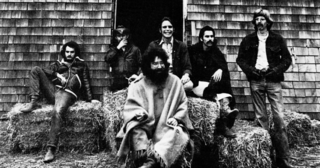
The Grateful Dead was an American rock band formed in 1965 in Palo Alto, California. The band is known for its eclectic style, which fused elements of rock, blues, jazz, folk, country, bluegrass, rock and roll, gospel, reggae, and world music with psychedelia; for its differentiated live performances centered around improvisation; and for its devoted fan base, known as "Deadheads". According to the musician and writer Lenny Kaye, "Their music touches on ground that most other groups don't even know exists." For the range of their influences and the structure of their live performances, the Grateful Dead are considered "the pioneering godfathers of the jam band world".
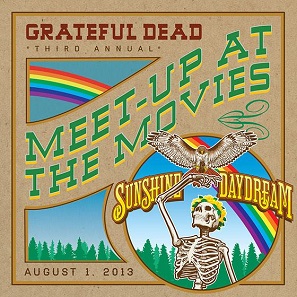
Sunshine Daydream is a music documentary film, starring the rock band the Grateful Dead. It was shot at their August 27, 1972 concert at the Old Renaissance Faire Grounds in Veneta, Oregon. Unreleased for many years, the film was sometimes shown at small film festivals, and bootleg recordings of it circulated on VHS and DVD, and as digital downloads. A digitally remastered and reedited official version of the film was released on August 1, 2013, showing only one time in selected theaters as that year's edition of the Grateful Dead Meet-Up at the Movies. It was screened with Grateful Days, a new documentary short that includes interviews with some of the concert attendees. Sunshine Daydream was released on DVD and Blu-ray on September 17, 2013.
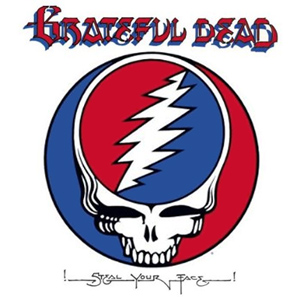
Steal Your Face is a live double album by the Grateful Dead, released in June 1976. It is the band's fifth live album and thirteenth overall. The album was recorded October 17–20, 1974, at San Francisco's Winterland Ballroom, during a "farewell run" that preceded a then-indefinite hiatus. It was the fourth and final album released by the band on their original Grateful Dead Records label. The Grateful Dead Movie Soundtrack, a second album from the same run of shows, was released in 2005.
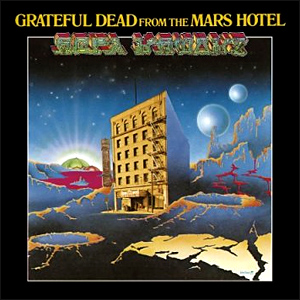
From the Mars Hotel is the seventh studio album by rock band the Grateful Dead. It was mainly recorded in April 1974, and originally released June 27, 1974. It was the second album by the band on their own Grateful Dead Records label. From the Mars Hotel came less than one year after their previous album, Wake of the Flood, and was the last before the band's then-indefinite hiatus from live touring, begun in October 1974.

One from the Vault is a live album by the Grateful Dead, recorded on August 13, 1975, at the Great American Music Hall in San Francisco, California, for a small audience of radio programmers. Three weeks later, the concert was broadcast nationwide on FM radio through Metromedia, after which the radio show was widely traded by fans on cassettes, and sold in bootleg LP versions under various titles including Make Believe Ballroom, becoming the most widely circulated Grateful Dead bootleg.
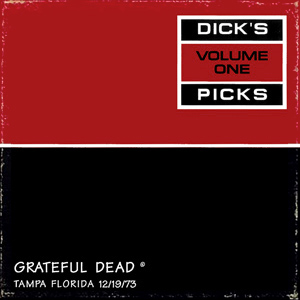
Dick's Picks Volume 1 is the first album in the Dick's Picks series of live releases by the Grateful Dead. It was recorded on December 19, 1973, at Curtis Hixon Hall in Tampa, Florida, and contains a rare recording of the band playing the blues standard "Nobody's Fault but Mine".

The Closing of Winterland is a four-CD live album by the Grateful Dead. It contains the complete concert performed on December 31, 1978. The concert was also released as a two-disc DVD. The title derives from the fact that it was the last concert in San Francisco's Winterland Arena, which was shut down shortly thereafter. The Dead celebrated the closing as an approximately five-hour-long party and invited some guests including guitarist John Cipollina of Quicksilver Messenger Service and Ken Kesey as well as actor Dan Aykroyd who provided the midnight countdown. It was certified Double Platinum by the RIAA on December 15, 2003 under the category of longform video, selling 200,000 units. The New Riders of the Purple Sage and Blues Brothers opened the show.

The Grateful Dead Movie Soundtrack is a five-CD live album by the rock band the Grateful Dead. It was recorded on October 16–20, 1974, and was released on March 15, 2005. The album was remixed from the original 16-track concert soundboard tapes.

Dick's Picks Volume 31 is a four-CD live album by the rock band the Grateful Dead. It was recorded on August 4 and 5, 1974 at the Philadelphia Civic Center in Philadelphia, Pennsylvania, and on August 6, 1974, at Roosevelt Stadium in Jersey City, New Jersey. It was released in March 2004.
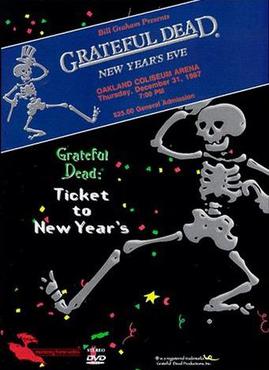
Ticket to New Year's is a concert video by the Grateful Dead. It was recorded at the Oakland Coliseum Arena in Oakland, California on December 31, 1987. It was released on VHS video tape and on Laserdisc in 1996, and on DVD in 1998.
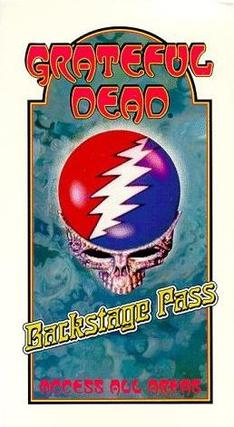
Backstage Pass is a music documentary video by the Grateful Dead. It was directed by Justin Kreutzmann, son of Grateful Dead drummer Bill Kreutzmann, and produced by Gillian Grisman, daughter of musician David Grisman. It was released in 1992, and is 35 minutes long.

Winterland 1973: The Complete Recordings is a 9 CD live album by the American rock band the Grateful Dead. It contains three complete concerts, missing only the encore of the first concert. It was recorded on November 9, 10, and 11, 1973, at the Winterland Ballroom in San Francisco, California. The album was released on April 1, 2008.

Winterland June 1977: The Complete Recordings is a 9 CD live album by the American rock band the Grateful Dead. It contains three complete concerts. It was recorded on June 7, 8, and 9, 1977, at the Winterland Ballroom in San Francisco, California. The album was released on October 1, 2009.

Dave's Picks Volume 2 is a three-CD live album by the band the Grateful Dead. It was recorded on July 31, 1974, at Dillon Stadium in Hartford, Connecticut. It was released on May 1, 2012.

Dave's Picks Volume 13 is a three-CD live album by the rock band the Grateful Dead. It contains the complete concert recorded on February 24, 1974, at the Winterland Arena in San Francisco, California. It was produced as a limited edition of 16,500 numbered copies, and was released by Rhino Records on February 1, 2015.

30 Trips Around the Sun is an 80-CD live album, packaged as a box set, by the rock band the Grateful Dead. Announced for the celebration of their 50th anniversary, it consists of 30 complete, previously unreleased concerts, with one show per year from 1966 through 1995. Comprising 73 hours of music, the box set is individually numbered and limited to 6,500 copies. It was released on October 7, 2015.

Dave's Picks Volume 17 is a three-CD live album by the rock band the Grateful Dead. It contains the complete concert recorded on July 19, 1974 at Selland Arena in Fresno, California. It was produced in a limited edition of 16,500 numbered copies, and released on February 1, 2016.

Dave's Picks Volume 24 is a three-CD live album by the rock band the Grateful Dead. It contains the complete concert recorded at the Berkeley Community Theatre in Berkeley, California on August 25, 1972. It was produced as a limited edition of 16,500 copies, and was released on November 1, 2017.

Dave's Picks Volume 34 is a three-CD live album by the rock band the Grateful Dead. It contains the complete concert recorded on June 23, 1974, at the Jai-Alai Fronton in Miami, Florida. It also includes a fourth, bonus disc recorded at the same venue the previous night. It was released on May 1, 2020, in a limited edition of 22,000 copies.
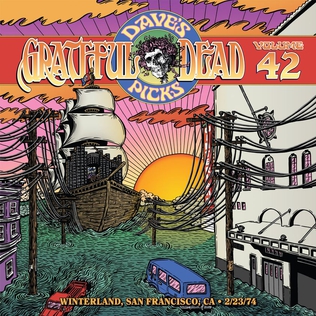
Dave's Picks Volume 42 is a three-CD live album by the rock band the Grateful Dead. It contains the complete concert recorded on February 23, 1974 at the Winterland Arena in San Francisco. It was released on April 29, 2022, in a limited edition of 25,000 copies.




















